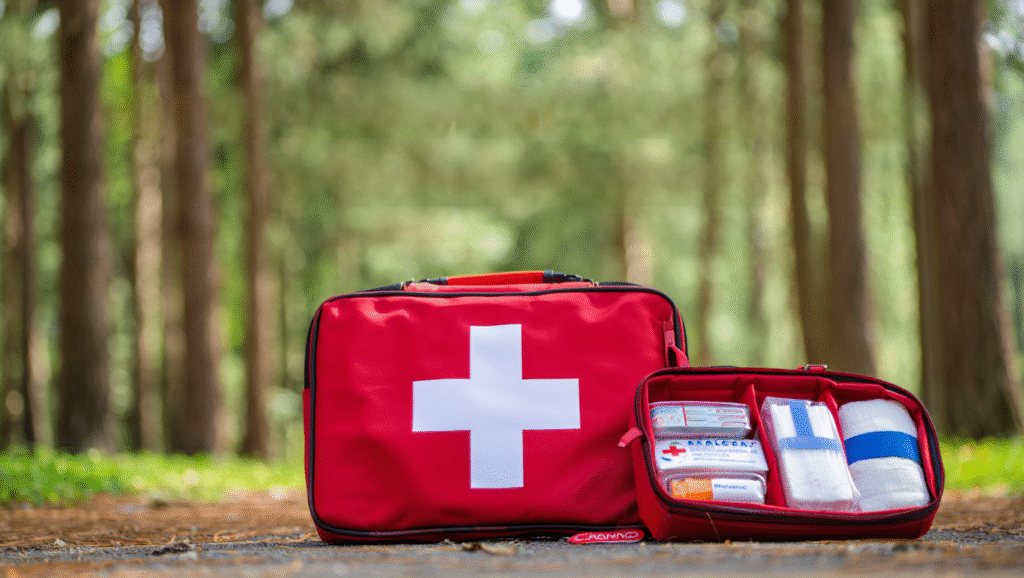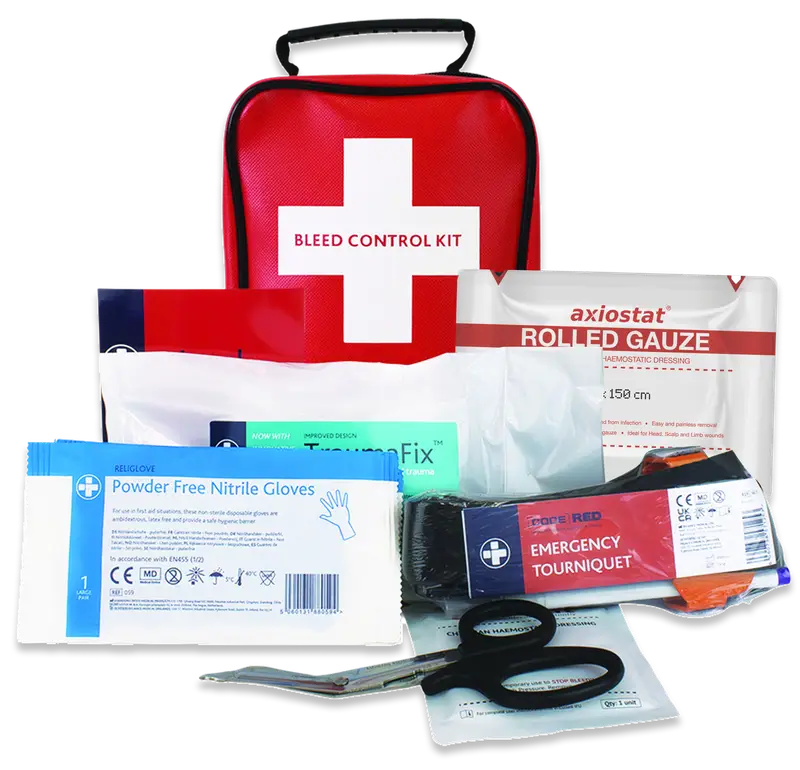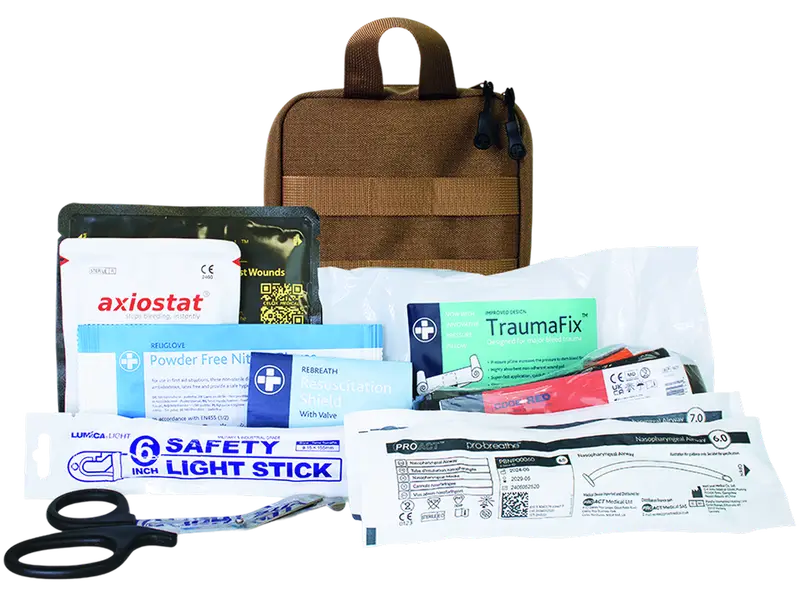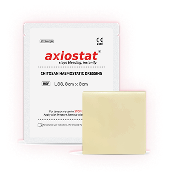
Unlike basic first-aid kits, trauma kits are built to handle life‑threatening injuries—severe bleeding, airway obstructions, penetrating wounds, burns, and fractures. These injuries can cause death or permanent disability if not treated immediately. A proper trauma kit lets you respond quickly, deliver critical care, and save lives, especially in high‑risk settings.
Axiostat is a chitosan-based hemostatic dressing trusted by trauma care teams around the world. Chitosan is a natural substance made from shellfish and has a positive charge.
When you apply Axiostat to a bleeding wound, it attracts red blood cells and platelets, which are negatively charged. This helps form a strong clot faster and stops the bleeding
1. Assess Your Environment’s Risk Level
2. Prioritize Life‑Saving Components
Ensure your kit includes:
3. Match Portability to Your Needs
Tip: Choose a kit you’re willing to keep with you. Avoid bulky or hard‑to‑carry options.
4. Verify Quality and Compliance
Choosing the best trauma kit is simple when you:
Understand the risks in your environment
Select essential life‑saving components
Ensure portability and ease of use
Rely on trusted products like Axiostat Hemostatic Gauze
Emergencies are unpredictable. Being prepared with the best trauma kit ensures you can act fast and save lives. Check your readiness today and equip yourself or your team with the right kit.

Axiostat® Rolled Gauze – 7.6cm x 150cm
Religlove – Nitrile Examination Gloves – Large – Pair
Universal shears large 7.6″
TraumaFix Dressing Sterile Including Pressure Pad
CODE RED Emergency Tourniquet
Foxseal Occlusive Chest Seal
Bleed Control Guidance Leaflet
1
2
1
1
1
1
1

Axiostat® Z-Fold Gauze – 7.6cm x 300cm
Foxseal Occlusive Chest Seal (Contains 2 Chest Seals)
TraumaFix Dressing Sterile Including Pressure Pad 10cm x 18cm
CODE RED Emergency Tourniquet
Rebreath Mouth to Mouth Resuscitation Device with Valve
Religlove Nitrile Examination Gloves Large (Pair)
6″ Military Grade High Intensity Cyalume Lightstick White
PRO-Breathe Nasopharyngeal Airway, Size 6
PRO-Breathe Nasopharyngeal Airway, Size 7
Universal shears large 7.6″
1
1
1
1
1
1
1
1
1
1
Axiostat® Vascular Patch
Axiostat® Vascular Patch
V35
V55
3.5cm x 3.5cm
5cm x 5cm
Box of 15
Box of 10
Axiostat® Rolled Gauze
Axiostat® Z-Fold
Axiostat® Z-Fold
Axiostat® Patch
Axiostat® Patch
Axiostat® 4-Ply Gauze
Axiostat® Single Ply Gauze
Axiostat® Rolled Gauze
6510-72-057-0462
6510-72-057-0460
6510-72-057-2313
6510-72-057-0464
–
6510-72-057-2350
6510-72-057-0461
–
L150
MIL300
MIL150
L88 / MIL88
M85
L2020
L1010 / MIL1010
L100
7.6cm x 150cm
7.6cm x 300cm
7.6cm x 150cm
8cm x 8cm
8cm x 5cm
20cm x 20cm
10cm x 10cm
7.6cm x 100cm
Individual
Individual
Individual
Box of 10
Box of 10
Box of 10
Box of 10
Individual


For Femoral and Radial Access Closures


For Femoral and Radial Access Closures